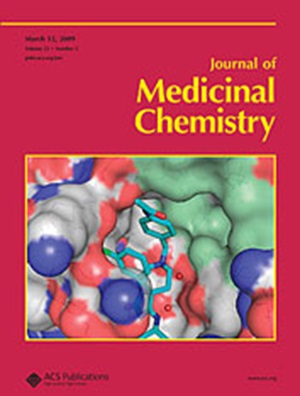靶向蛋白质降解:E3 连接酶解旋的现有方法和新方法
IF 6.8
1区 医学
Q1 CHEMISTRY, MEDICINAL
引用次数: 0
摘要
靶向蛋白质降解(TPD),包括使用蛋白水解靶向嵌合体(PROTACs)和分子胶降解器(MGDs)降解蛋白质,是开发癌症及其他疾病新型疗法的新兴策略。PROTACs 或 MGDs 的功能是诱导 E3 连接酶与感兴趣的蛋白质(POI)接近,导致泛素化,进而使 POI 蛋白质体降解。值得注意的是,TPD 的一个主要问题是缺乏可配体的 E3 连接酶,因为目前的研究主要使用 CUL4CRBN 和 CUL2VHL。TPD 团体正在寻求扩大可配体 E3 连接酶的范围,但大多数发现都依赖于表型筛选或偶然性,因此有必要进行系统的目标解构。在这里,我们研究并讨论了针对通过表型筛选或单价胶化学研究发现的降解剂的现有和新兴 E3 连接酶解旋方法,并强调了鉴定更多可配体 E3 连接酶的未来前景。本文章由计算机程序翻译,如有差异,请以英文原文为准。

Targeted Protein Degradation: Current and Emerging Approaches for E3 Ligase Deconvolution
Targeted protein degradation (TPD), including the use of proteolysis-targeting chimeras (PROTACs) and molecular glue degraders (MGDs) to degrade proteins, is an emerging strategy to develop novel therapies for cancer and beyond. PROTACs or MGDs function by inducing the proximity between an E3 ligase and a protein of interest (POI), leading to ubiquitination and consequent proteasomal degradation of the POI. Notably, one major issue in TPD is the lack of ligandable E3 ligases, as current studies predominantly use CUL4CRBN and CUL2VHL. The TPD community is seeking to expand the landscape of ligandable E3 ligases, but most discoveries rely on phenotypic screens or serendipity, necessitating systematic target deconvolution. Here, we examine and discuss both current and emerging E3 ligase deconvolution approaches for degraders discovered from phenotypic screens or monovalent glue chemistry campaigns, highlighting future prospects for identifying more ligandable E3 ligases.
求助全文
通过发布文献求助,成功后即可免费获取论文全文。
去求助
来源期刊

Journal of Medicinal Chemistry
医学-医药化学
CiteScore
4.00
自引率
11.00%
发文量
804
审稿时长
1.9 months
期刊介绍:
The Journal of Medicinal Chemistry is a prestigious biweekly peer-reviewed publication that focuses on the multifaceted field of medicinal chemistry. Since its inception in 1959 as the Journal of Medicinal and Pharmaceutical Chemistry, it has evolved to become a cornerstone in the dissemination of research findings related to the design, synthesis, and development of therapeutic agents.
The Journal of Medicinal Chemistry is recognized for its significant impact in the scientific community, as evidenced by its 2022 impact factor of 7.3. This metric reflects the journal's influence and the importance of its content in shaping the future of drug discovery and development. The journal serves as a vital resource for chemists, pharmacologists, and other researchers interested in the molecular mechanisms of drug action and the optimization of therapeutic compounds.
 求助内容:
求助内容: 应助结果提醒方式:
应助结果提醒方式:


